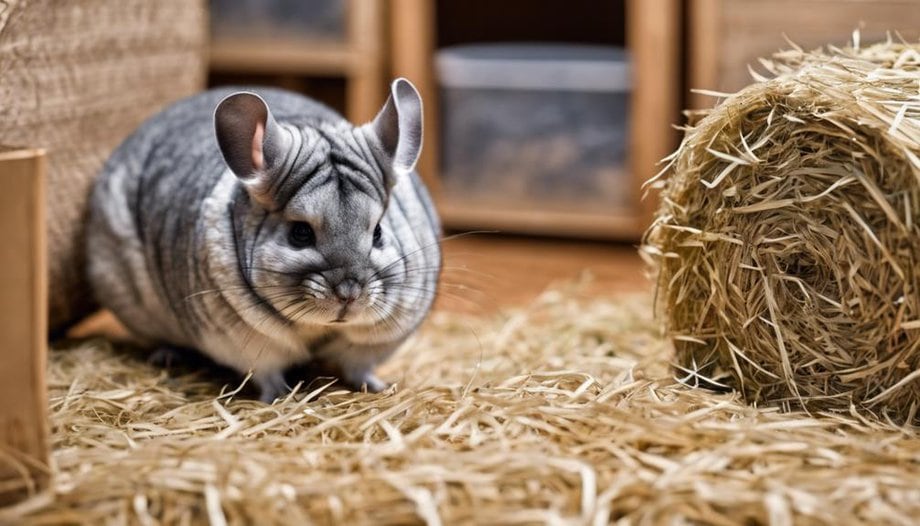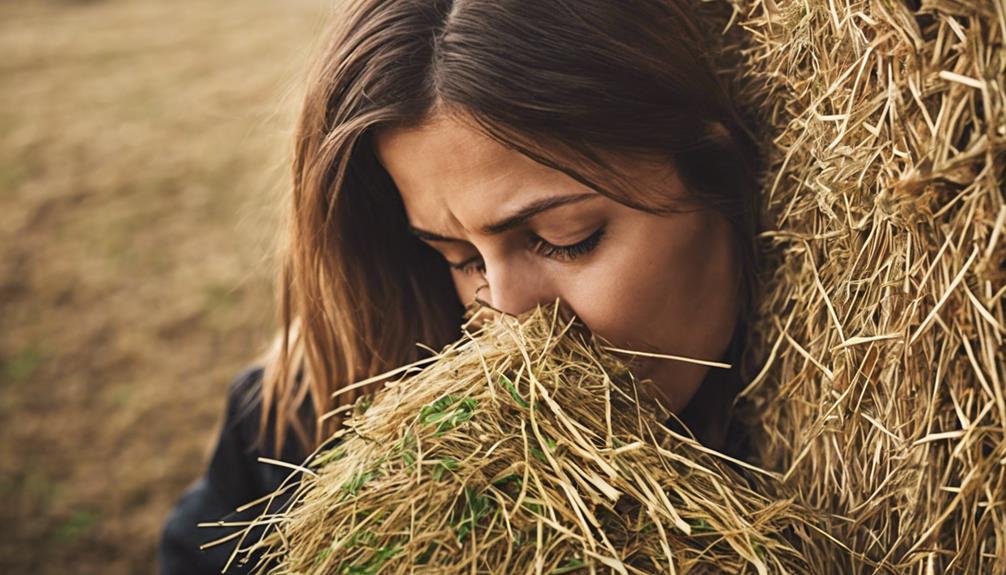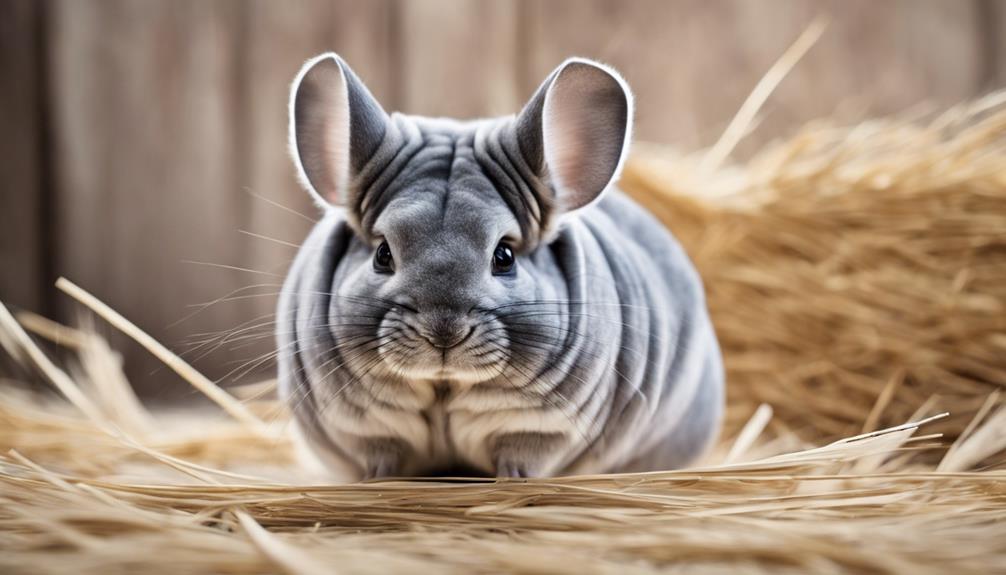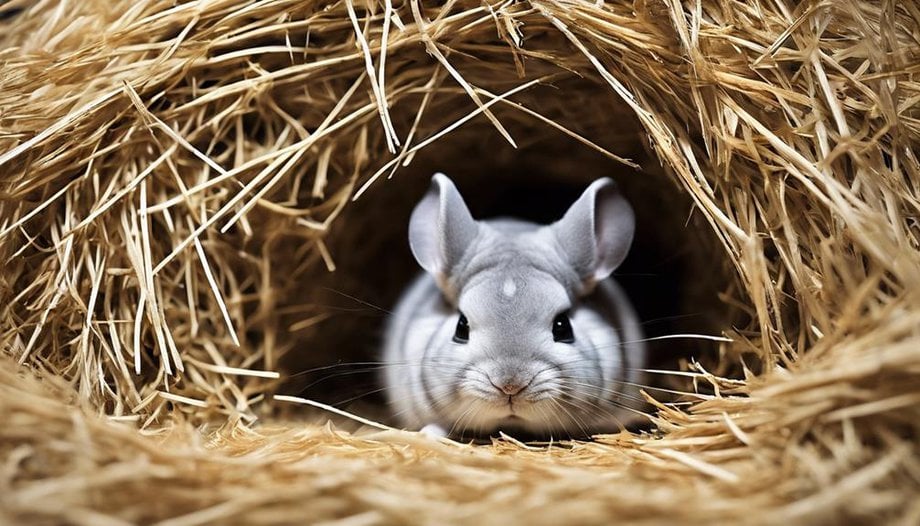How to Identify High-Quality Hay for Your Chinchilla

When choosing hay for your chinchilla, it's important to select high-quality options to ensure they receive the proper nutrition. Look for hay that is fresh, green, and free of dust or mold. Timothy hay is a popular choice for chinchillas as it is high in fiber and low in calcium, which is ideal for their digestive system. Orchard grass hay and meadow hay are also good options. Avoid alfalfa hay, as it is too high in calcium and protein for chinchillas. Make sure to store hay in a cool, dry place to maintain its freshness and nutritional value. Providing your chinchilla with a variety of hays can help prevent boredom and ensure they are getting a well-rounded diet. Remember to always monitor your chinchilla's hay intake and make sure they have access to fresh hay at all times.
Choosing high-quality hay for your chinchilla is essential for their health and well-being. By selecting fresh, dust-free hay that is appropriate for chinchillas, you can help ensure they receive the necessary nutrients for a balanced diet. Offering a variety of hay types and monitoring their intake can help keep your chinchilla happy and healthy.
Hay Types to Consider
When selecting hay for your chinchilla, always prioritize quality over quantity to guarantee the best nutrition and health. Think about the nutritional value and suitability of the hay you choose. Opt for hay that's high in fiber, low in protein, and free from pesticides or additives. Look for varieties like timothy hay or orchard grass, as they provide the necessary nutrients for your chinchilla's well-being.
Packaging options can also impact the quality of the hay. Make sure that the hay is stored in a way that maintains its freshness and prevents mold or dust contamination. Look for hay that's packaged in airtight bags or boxes to preserve its nutritional content.
Availability is another factor to think about when selecting hay for your chinchilla. Choose a supplier that offers fresh hay consistently and is transparent about the source of their products. This ensures that you can provide your chinchilla with high-quality hay regularly, promoting their health and happiness.
Appearance Matters
With a discerning eye, assess the hay's appearance to gauge its quality and suitability for your chinchilla's nutritional needs. Visual inspection is key when determining the hay's characteristics. Color grading plays a significant role in identifying high-quality hay. Here is a table to guide you in evaluating the hay's appearance:
| Color | Quality |
|---|---|
| Green | Excellent |
| Yellow | Good |
| Brown | Average |
| Gray | Poor |
When examining the hay, aim for a fresh, green hue as it indicates high nutritional value. Yellow hay can also be suitable, but be cautious with brown or gray tones, as they might signify age or mold, which can be harmful to your chinchilla's health. Remember, the appearance of the hay is a direct reflection of its quality and impact on your little pet's well-being. Choose wisely to provide the best for your furry companion.
Smell Test

When evaluating hay for your chinchilla, your nose becomes a valuable ally. By conducting a simple smell test, you can gauge the freshness and quality of the hay.
Take a moment to inhale deeply; a sweet, fresh scent indicates high-quality hay while musty or moldy odors may signify poor quality or improper storage.
Freshness Indicator
Engage your senses by carefully inhaling the aroma of the hay to determine its freshness before offering it to your chinchilla. Fresh hay should have a pleasant, sweet smell that signifies it's still packed with essential nutrients.
When evaluating the freshness of hay, keep in mind the storage guidelines and quality standards recommended for chinchilla care. Quality hay retains its nutritional content through proper storage and careful hay processing.
A musty or moldy odor indicates that the hay has likely deteriorated and may not be suitable for your chinchilla. By paying attention to the freshness indicator through the smell test, you can make sure that your furry friend receives the high-quality hay needed for optimal health and happiness.
Odor Intensity Assessment
To determine the freshness of hay for your chinchilla, rely on your sense of smell to assess the odor intensity through a simple yet important smell test. When conducting the smell test, pay attention to any musty or moldy odors which indicate poor hay quality.
Fresh hay should have a pleasant grassy scent, signaling its nutritional value for your furry friend. Effective odor control is critical for maintaining high-quality hay, ensuring your chinchilla receives the best nutrition.
Proper hay storage plays a key role in preserving freshness, keeping hay in a dry, well-ventilated area to prevent mold growth. By mastering the art of odor assessment, you can provide your chinchilla with superior hay for the best health and happiness.
Hay Source Verification
For determining the authenticity and quality of the hay source through a smell test, trust your olfactory senses to guide you in the right direction.
When evaluating hay through scent, consider the supplier reputation and authenticity verification. A reputable supplier is likely to provide high-quality hay, making sure your chinchilla receives nutritionally rich and safe feed.
Quality control and hay testing techniques play an important role in verifying the hay's origin and quality. By recognizing the distinct scent of fresh, high-quality hay, you can guarantee your chinchilla receives the best nutrition possible.
Embrace the process of hay source verification through the subtle yet revealing cues your sense of smell can provide, safeguarding your furry friend's well-being.
Texture Check

When evaluating the quality of hay for your chinchilla, a critical step is to conduct a thorough texture check. The texture of hay can give you valuable insights into its overall quality and nutritional value. To help you in this process, consider the following key aspects:
| Texture Aspect | Description |
|---|---|
| Moisture level analysis | Check for excessive moisture which can lead to mold. |
| Packaging quality check | Make sure the hay is stored in a dry and clean package. |
| Stem thickness evaluation | Opt for hay with medium to thick stems for chewing. |
| Leafiness examination | Look for a good balance of leaves for nutritional value. |
Freshness Factors
As you examine the hay for your chinchilla, remember that the color and smell can give you insight into its freshness.
Texture and moisture levels are also vital indicators of hay quality.
Color and Smell
An indication of high-quality hay for your chinchilla can be discerned through the vibrant color and fresh, sweet smell it exudes.
When selecting hay, consider the color variations that may exist, as different chinchillas may have importance preferences. Vibrant greens and a mix of other hues are signs of nutrient-rich hay.
The aroma profiles also play a vital role in determining hay quality. Opt for hay that emanates a fresh, sweet scent, indicating it's free from mold or dampness.
Your chinchilla will thrive on hay that not only looks appealing with its varied colors but also delights their senses with a pleasant fragrance, ensuring they receive the best nutrition and overall well-being.
Texture and Moisture
To guarantee your chinchilla receives the best nutrition and overall well-being, pay close attention to the texture and moisture levels of the hay you select. High-quality hay should feel soft to the touch and have just the right amount of moisture to ensure freshness.
When evaluating hay for your furry friend, consider the storage conditions it has been exposed to, as this can greatly impact its nutritional value. Properly stored hay retains more nutrients, providing your chinchilla with essential vitamins and minerals.
Dust and Mold Inspection

Perform a thorough inspection for dust and mold when evaluating the quality of hay for your chinchilla. Dust analysis is vital as chinchillas are sensitive to respiratory issues, making dusty hay unsuitable for their consumption.
To assess dust levels, gently shake a small amount of hay in a well-lit area; excessive dust clouds indicate poor quality. Mold detection is equally important as moldy hay can be toxic to chinchillas.
Look for any dark, discolored patches, musty smells, or unusual textures that could indicate the presence of mold. Prioritize hay batches that are clean, odor-free, and free from mold to guarantee the well-being of your furry companion.
Source and Storage Tips
Inspecting hay for dust and mold is essential to guaranteeing your chinchilla's health; now let's explore valuable tips on sourcing and storing high-quality hay. When it comes to sourcing hay for your chinchilla, consider vendor reputation and hay selection carefully. Opt for suppliers known for their high-quality products and choose hay that is fresh, fragrant, and free of debris. Additionally, storing hay properly is important to maintain its quality over time. Investing in the right storage solutions can make a significant difference in preserving the nutritional value of the hay and keeping it free from contaminants.
To help you make informed decisions, here are some key tips on source and storage:
| Source Tips | Storage Tips |
|---|---|
| Check vendor reviews and recommendations | Store hay in a cool, dry place away from sunlight |
| Look for hay that is green and leafy | Use airtight containers to prevent moisture and mold |
| Consider buying in bulk for cost-efficiency | Rotate hay stock regularly to ensure freshness |
| Ask vendors about their harvesting and drying processes | Monitor humidity levels in the storage area |
| Avoid hay with excessive dust or discoloration | Dispose of any moldy or spoiled hay immediately |
Frequently Asked Questions
Can Chinchillas Eat Hay That Is Slightly Yellow or Has a Few Brown Spots?
Yes, chinchillas can eat hay that is slightly yellow or has a few brown spots. However, make sure the hay's freshness and nutritional value. Proper storage is important. Check for mold or dust, which can harm your chinchilla's health.
How Long Can Hay Be Stored Before It Starts to Lose Its Nutritional Value?
Storing hay properly is important for maintaining its nutritional value. Hay shelf life varies, but generally, aim to use it within 6-12 months for best quality. Degradation can occur over time, so keep it in a cool, dry place.
Is There a Specific Hay Type That Is Best for Chinchillas With Sensitive Stomachs?
When it comes to hay preferences and digestive health, timothy hay is often recommended for chinchillas with sensitive stomachs. Its balanced fiber content can aid in digestion and reduce the risk of allergies.
How Often Should Hay Be Replaced in a Chinchilla's Cage?
To maintain Chinchilla health and make sure hay freshness, replace hay in their cage daily. Regular cage maintenance is vital for sustaining hay quality, supporting your furry friend's well-being, and keeping their environment clean and comfortable.
Are There Any Natural Alternatives to Store-Bought Hay for Chinchillas?
For your chinchilla, consider homemade alternatives to store-bought hay. Nutritional benefits can be found in fresh herbs like parsley, cilantro, and mint. These provide variety and essential nutrients, promoting a balanced diet for your furry friend.











